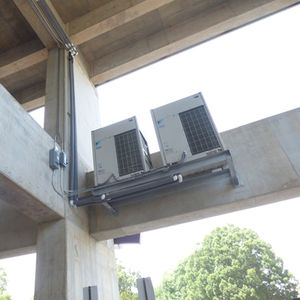 The need for UV-resistant pipe insulation is common for installations on building exteriors to transport refrigerants between large roof-top HVAC or Variable Refrigerant Flow (VRF) system and interior equipment providing conditioned air or chilled liquids. Exterior applications like this need to be protected from UV rays because UV radiation will break down the insulation over time. Premature failure of insulation can result in energy loss, process failures, safety issues, and costly repairs.
The need for UV-resistant pipe insulation is common for installations on building exteriors to transport refrigerants between large roof-top HVAC or Variable Refrigerant Flow (VRF) system and interior equipment providing conditioned air or chilled liquids. Exterior applications like this need to be protected from UV rays because UV radiation will break down the insulation over time. Premature failure of insulation can result in energy loss, process failures, safety issues, and costly repairs.
U.S. commercial energy codes and standards, such as ASHRAE 90.1 Energy Standard for Buildings Except Low-Rise Residential Buildings, International Energy Conservation Code® (IECC®), require any fluid carrying medium to be insulated. The codes and standards do specify the insulation thickness based on pipe size and line temperature; however, they do not specify a pipe insulation type. This can cause confusion when selecting the best outdoor pipe insulation due to variety of choices (fiberglass, closed-cell flexible elastomeric foam, phenolic foam, polyisocyanurate, and cellular glass). While building codes require jacketing or coating of outdoor insulation, it a good idea to use a UV-resistant insulation under those barriers.
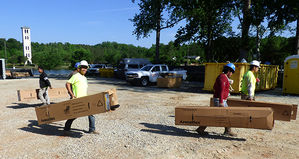 How does a mechanical contractor choose the best UV-resistant pipe insulation for their project? While cost is always a top concern to meet project budgets, other important factors such as energy efficiency, durability to exterior exposure, maintenance/repair, and replacement costs must also be evaluated when specifying UV-resistant pipe insulation. Due to its lightweight closed-cell structure, built-in vapor retarder, excellent condensation control performance, flexibility, favorable thermal conductivity, and moderate cost, closed-cell flexible elastomeric foam is the best specification for insulating domestic hot water, chilled water, and commercial/industrial refrigerant lines.
How does a mechanical contractor choose the best UV-resistant pipe insulation for their project? While cost is always a top concern to meet project budgets, other important factors such as energy efficiency, durability to exterior exposure, maintenance/repair, and replacement costs must also be evaluated when specifying UV-resistant pipe insulation. Due to its lightweight closed-cell structure, built-in vapor retarder, excellent condensation control performance, flexibility, favorable thermal conductivity, and moderate cost, closed-cell flexible elastomeric foam is the best specification for insulating domestic hot water, chilled water, and commercial/industrial refrigerant lines.
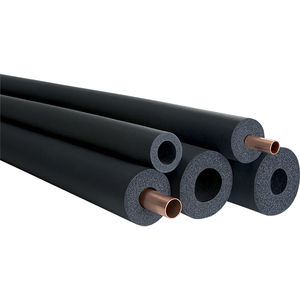
ArmaFlex® UT is an EPDM-based flexible elastomeric foam material that effectively retards degradation due to ultraviolet rays and performs well on pipe applications temperatures up to 300°F, the highest max use temperature in the elastomeric marketplace today. ArmaFlex UT is low VOC, low halogen, and PVC free and is manufactured without CFCs, HFCs, HCFCs, PBDEs, or Formaldehyde. This solution meets all the requirements of the specifier, manufacturer, and local building codes and meets a flame and smoke developed index of 25/50 as tested to ASTM E84/UL 723. ArmaFlex UT is also GREENGUARD Gold certified and UL 94 recognized V-0, V-1, 5VA (thickness dependent) UL File No. E55798.
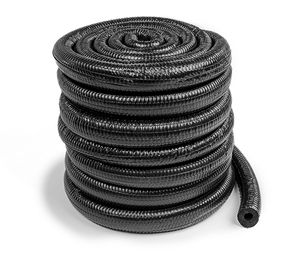 ArmaFlex® Shield flexible foam insulation from Armacell is a moisture-resistant and UV-resistant product with a durable factory-applied protective jacket specially designed for line set, HVAC and refrigeration applications. This tough coating can take the abuse of challenging installations and stands up to the effects of weather elements like UV, making it a great choice for outdoor applications. ArmaFlex Shield meets the IECC code requirements for outdoor insulation and meets a flame and smoke developed index of 25/50 as tested to ASTM E84/UL 723. It is a low-maintenance alternative to unprotected insulation or adding a separate jacket on the jobsite. Because the strong factory-applied jacket resists abrasions, ArmaFlex Shield will protect and keep working in the sun for years to come.
ArmaFlex® Shield flexible foam insulation from Armacell is a moisture-resistant and UV-resistant product with a durable factory-applied protective jacket specially designed for line set, HVAC and refrigeration applications. This tough coating can take the abuse of challenging installations and stands up to the effects of weather elements like UV, making it a great choice for outdoor applications. ArmaFlex Shield meets the IECC code requirements for outdoor insulation and meets a flame and smoke developed index of 25/50 as tested to ASTM E84/UL 723. It is a low-maintenance alternative to unprotected insulation or adding a separate jacket on the jobsite. Because the strong factory-applied jacket resists abrasions, ArmaFlex Shield will protect and keep working in the sun for years to come.
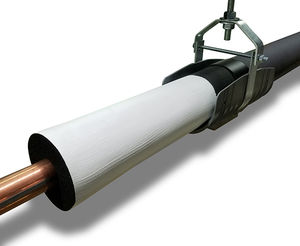 It is worth noting that additional protection like a cover, jacketing or coating on the external surface of the insulation is required per local building codes. Usually this is a jacket or cladding made from metal, UV resistant laminate or UV resistant PVC wrap. Another option is to apply a coating to the exterior surface of the insulation like ArmaFlex WB Finish. Two coats of ArmaFlex WB Finish applied to insulation make it exceptionally durable and weather resistant to UV. Outdoor surfaces should be recoated every 2 to 4 years. We recommend the use of ArmaFlex HT 625 high-temperature adhesive for use with any application over 250 °F.
It is worth noting that additional protection like a cover, jacketing or coating on the external surface of the insulation is required per local building codes. Usually this is a jacket or cladding made from metal, UV resistant laminate or UV resistant PVC wrap. Another option is to apply a coating to the exterior surface of the insulation like ArmaFlex WB Finish. Two coats of ArmaFlex WB Finish applied to insulation make it exceptionally durable and weather resistant to UV. Outdoor surfaces should be recoated every 2 to 4 years. We recommend the use of ArmaFlex HT 625 high-temperature adhesive for use with any application over 250 °F.
Below are a few references for national and state energy codes/standards that specifically require protection of UV-resistant refrigeration pipe insulation.
- “Piping insulation exposed to the weather shall be protected from damage, including that caused by sunlight, moisture, equipment maintenance, and wind, and shall provide shielding from solar radiation that can cause degradation of the material. Adhesive tape shall not be permitted.” IECC-2018 C403.11.3.1 Protection of piping insulation (Mandatory). codes.iccsafe.org/content/IECC2018P5/chapter-4-ce-commercial-energy-efficiency;
- “Insulation exposed to weather shall be suitable for outdoor service, e.g., protected by aluminum, sheet metal, painted canvas, or plastic cover. Cellular foam insulation shall be protected as above or painted with a coating that is water retardant and provides shielding from solar radiation.” ASHRAE 90.1-2019 6.3.2.l. ashrae.iwrapper.com/ASHRAE_PREVIEW_ONLY_STANDARDS/STD_90.1_2019
- “Cellular foam insulation shall be protected as above or painted with a coating that is water retardant and provides shielding from solar radiation that can cause degradation of the material.” California Title 24 – 2022 4.4.1.2.F.2. https://epubs.iapmo.org/2022/CMC/index.html
